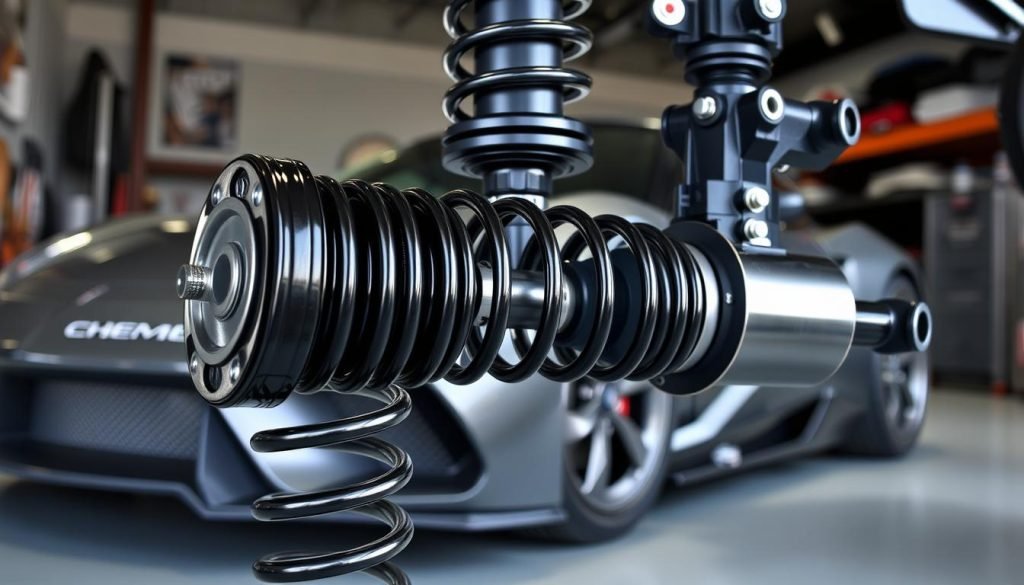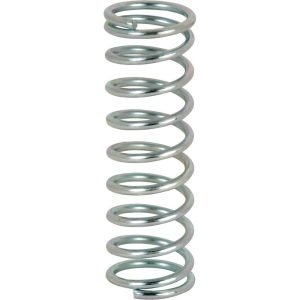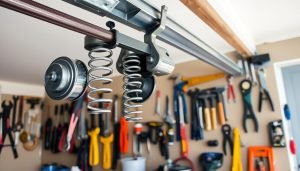Coilover suspension is key for better vehicle performance. A higher spring rate can change how your vehicle handles and feels. It’s important to know how adjusting the spring rate can improve your coilover suspension.
Coilover suspension systems aim for a smooth ride and great handling. The spring rate affects how much the suspension moves. A stiffer spring rate can make handling better but might make the ride less comfortable. It’s vital to understand how spring rate and coilover suspension work together.
Adjusting the spring rate in coilover suspension is critical for top performance. Increasing the spring rate can make your vehicle handle better, even at high speeds. But, it’s important not to make the ride too harsh. Finding the right balance between performance and comfort is key in coilover suspension and spring rate adjustment.
Understanding Coilover Basics and Spring Rates
Coilovers are a type of suspension system that combines a coil spring and a shock absorber into one unit. This design offers better vehicle handling and ride comfort than traditional systems. To grasp how coilovers work, it’s key to understand spring rates and their impact on vehicle performance.
The spring rate is a critical factor in coilover suspension. It measures the force needed to compress the spring by a certain distance. Spring rates are usually measured in pounds per inch (lb/in) or kilograms per millimeter (kg/mm). A higher rate means the spring is stiffer, while a lower rate makes it softer.
What Are Coilovers?
Coilovers aim to provide a smooth ride and better handling. They allow the suspension to move up and down while keeping the tire in contact with the road. They consist of a coil spring, a shock absorber, and a mounting system.
Defining Spring Rates
Spring rates measure the force needed to compress the spring. A higher spring rate improves vehicle handling but might reduce ride comfort. A lower spring rate offers a smoother ride but could impact handling.
How Spring Rates Are Measured
Spring rates are measured with a spring rate tester. This tool applies a known force to the spring and measures compression. The spring rate is then calculated by dividing the applied force by the compression distance.
Understanding coilover basics and spring rates is vital for making informed suspension upgrades and adjustments. Knowing how spring rates affect vehicle handling and ride comfort helps drivers tailor their suspension to their needs.
The Physics Behind Higher Spring Rates
Understanding the physics of higher spring rates is key in suspension tuning. A higher spring rate changes how a vehicle handles and feels. It affects the vehicle’s motion and how it rides.
Finding the right balance between spring rate and damping is important. A higher spring rate can make handling better by reducing roll and pitch. But, it might make the ride less comfortable. A lower spring rate can make the ride smoother but might not handle as well.
Higher spring rates in coilover suspension systems have some benefits:
- Improved handling and stability
- Reduced body roll and pitch
- Enhanced cornering performance
But, there are downsides to higher spring rates. They can make the ride less comfortable and wear out suspension parts faster. Knowing how higher spring rates work helps drivers choose the best setup for their vehicle.
What Does Higher Spring Rate Do on Coilovers: Complete Analysis
Higher spring rates in coilovers can greatly change how a vehicle performs. By adjusting the spring rate, drivers can make their vehicle handle better. We’ll explore how this affects the vehicle’s height, how it moves, and its handling.
A higher spring rate lowers the vehicle, which can make it more aerodynamic and reduce body roll. But, it also means less comfort in the ride. 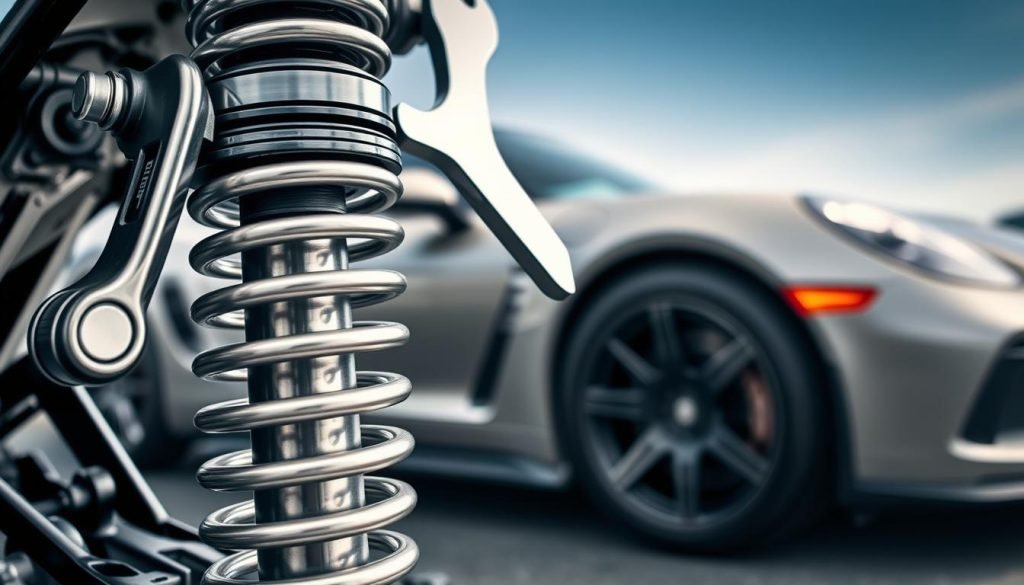
Impact on Vehicle Height
Higher spring rates lower the vehicle’s center of gravity. This makes the vehicle handle better, which is great for racing or high-performance driving. It helps prevent rollovers.
Effects on Suspension Movement
Higher spring rates limit how much the suspension moves. This makes the vehicle more responsive and better handling. It’s perfect for driving on twisty roads or in autocross events.
Influence on Handling Dynamics
Finding the right balance between comfort and performance is key with higher spring rates. By adjusting the spring rate, drivers can enhance their vehicle’s handling. Whether on the street or track, a higher spring rate boosts performance and handling.
Benefits of Higher Spring Rates
Higher spring rates can greatly improve a vehicle’s performance. They enhance ride comfort and suspension tuning. Drivers can adjust spring rates to meet their needs and preferences.
Some key benefits of higher spring rates include:
- Improved handling and stability, making cornering and high-speed driving safer
- Enhanced ride comfort, as the vehicle better absorbs road bumps
- Increased control and precision, helping navigate tough terrain or track conditions
Higher spring rates also help in optimizing a vehicle’s suspension tuning for different driving conditions. For instance, a driver who often goes to track events might choose a stiffer setup for better handling.
In summary, higher spring rates are a favorite among drivers who seek performance and ride comfort. By learning to adjust and optimize spring rates, drivers can enhance their vehicle’s suspension. This leads to a more responsive and comfortable driving experience.
Potential Drawbacks of Stiffer Springs
Higher spring rates in coilover suspension have their pluses, but also downsides. One big issue is how it affects ride comfort. A stiffer spring can make the ride harsh, which is not great for daily driving. This is because the suspension can’t soak up road bumps as well, leading to more vibration and noise inside the car.
Another thing to think about is how spring rate adjustment affects suspension wear. A higher spring rate can stress suspension parts more, leading to faster wear. This can increase the cost of owning a car with coilover suspension. It’s important to choose the right spring rate for your car’s use to avoid these problems.
When looking at the downsides of stiffer springs, consider these points:
- Ride comfort: How will the increased spring rate affect the overall comfort of the vehicle?
- Wear and tear: What impact will the higher spring rate have on the lifespan of suspension components?
- Daily driving: How will the stiffer spring rate affect the vehicle’s handling and performance in everyday driving situations?
By carefully weighing these factors and considering your car’s needs, you can find a balance. This ensures your coilover suspension is both performance-oriented and comfortable.
Choosing the Right Spring Rate for Your Vehicle
Choosing the right spring rate for your vehicle involves several factors. Vehicle handling and ride comfort are key. You must consider your vehicle’s weight, suspension type, and driving style.
The weight of your vehicle is a big factor. A heavier vehicle needs a higher spring rate for stability. A lighter vehicle might need a lower rate for a smoother ride.
The type of suspension also matters. Different systems react differently to spring rates. It’s important to know how your vehicle’s suspension works. Here’s how to pick the right spring rate:
- Determine your vehicle’s weight and suspension type
- Assess your driving style and the terrain you typically drive on
- Research and compare different spring rates to find the one that best suits your needs
By carefully evaluating these factors and considering your unique needs, you can choose the perfect spring rate. This ensures a balance between vehicle handling and ride comfort.
Installation Considerations for High-Rate Springs
Installing high-rate springs requires careful planning. You must decide if you’ll hire a pro or do it yourself. Suspension tuning is key to getting the right performance and handling.
Going for a professional installation is usually the best choice. It ensures your coilover suspension is set up right. But, if you’re doing it yourself, make sure you have the right tools. You’ll need a spring compressor, shock absorber spanner, and wrenches and sockets.
Here are some important tips for a successful installation:
- Make sure the vehicle is securely lifted and supported
- Use the correct tools and equipment to avoid damage or injury
- Follow the manufacturer’s instructions for installation and suspension tuning
- Test the coilover suspension thoroughly after installation to ensure proper function and performance
By planning and executing the installation carefully, drivers can enjoy better handling and performance.
| Installation Method | Recommended Tools | Safety Precautions |
|---|---|---|
| Professional Installation | Spring compressor, shock absorber spanner | Ensure vehicle is securely lifted and supported |
| DIY Installation | Wrenches and sockets, spring compressor | Follow manufacturer’s instructions, use correct tools and equipment |
Maintenance Requirements for High-Rate Coilovers
Keeping your high-rate coilovers in top shape is key. This means spring rate adjustment to keep your vehicle handling just right. Adjusting the spring rate lets you tailor the suspension to your driving style.
To keep your coilovers running smoothly, follow these steps:
- Regularly inspect the coilovers for signs of wear and tear
- Check the spring rate and adjust as needed to maintain optimal vehicle handling
- Keep the coilovers clean and free of debris to prevent damage and corrosion
By sticking to these maintenance tips, your high-rate coilovers will keep performing well. Always check your vehicle’s manual for specific care advice.
Remember, spring rate adjustment affects your vehicle’s performance. Adjusting the spring rate can enhance vehicle handling and stability. This makes driving safer and more enjoyable.
| Maintenance Task | Frequency | Importance |
|---|---|---|
| Inspect coilovers for wear and tear | Every 6 months | High |
| Check and adjust spring rate | Every 12 months | Medium |
| Clean and lubricate coilovers | Every 3 months | Low |
Performance Tuning with Different Spring Rates
Suspension tuning is key to improving vehicle performance. Adjusting spring rates lets drivers fine-tune handling and comfort. For racing, stiffer springs offer better control. But for daily driving, softer springs are better for comfort.
Important things to think about when tuning springs include:
- Track use: Stiffer springs for improved handling and stability
- Street performance: Softer springs for enhanced ride comfort and daily driving
- Suspension tuning: Adjusting spring rates to balance competing demands
Drivers can improve their vehicle’s performance by understanding spring rates and suspension movement. Whether you want better ride comfort or top-notch handling, tuning your suspension is key. Proper suspension tuning is vital for a vehicle’s performance, balancing comfort and handling.
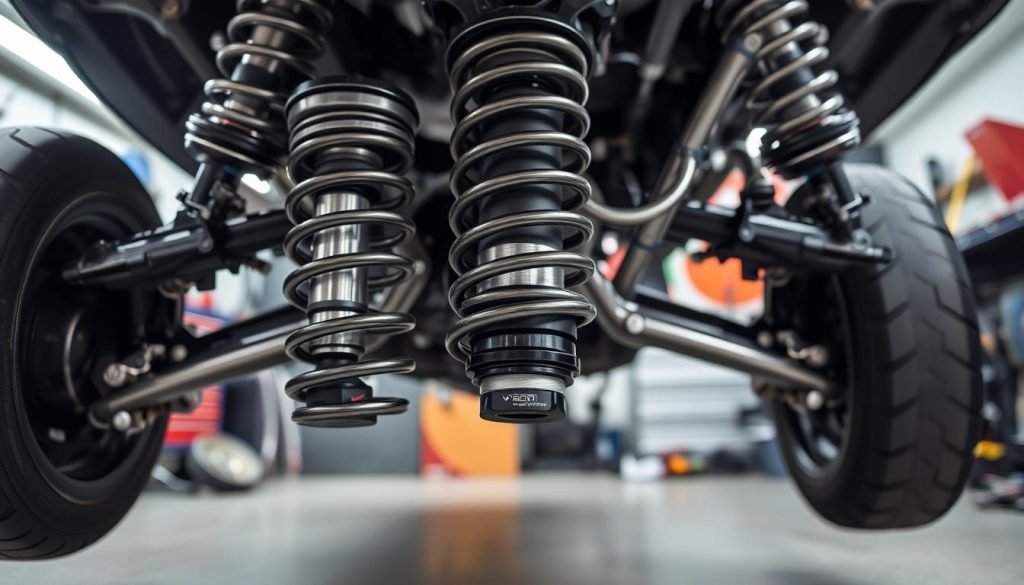
The aim of tuning springs is to find the perfect mix of comfort and handling. By considering your driving needs, you can set up your vehicle’s suspension for the best results.
| Spring Rate | Ride Comfort | Handling |
|---|---|---|
| Softer | Improved | Reduced |
| Stiffer | Reduced | Improved |
Common Mistakes to Avoid with High-Rate Springs
When using high-rate springs in a coilover suspension system, it’s key to know common mistakes. These can hurt performance and safety. One big mistake is wrong installation. This can cause uneven spring rate adjustment and bad handling.
To steer clear of these errors, keep these tips in mind:
- Don’t skip regular checks and cleanings of your coilovers
- Make sure to adjust the spring rate correctly to avoid uneven ride height and handling issues
- Always follow the manufacturer’s instructions for installation and upkeep
By watching out for these common mistakes and avoiding them, you can make sure your coilover suspension system works its best. Always stick to the manufacturer’s advice for spring rate adjustment and care. This will help you get the most from your high-rate springs.
Conclusion: Making the Right Choice for Your Suspension Setup
The spring rate in your vehicle’s coilovers greatly affects its handling and comfort. It’s key to think about your car’s weight, suspension type, and how you drive. Finding the right balance lets your suspension work its best.
Looking to improve cornering, stability, or daily comfort? The spring rate matters a lot. By understanding your needs and getting advice, you can choose the right spring rate. This ensures your car performs and feels great.
Every car is different, so there’s no single best spring rate. Be open to trying different setups. The right one will make your car handle and ride better, making every drive more enjoyable.

